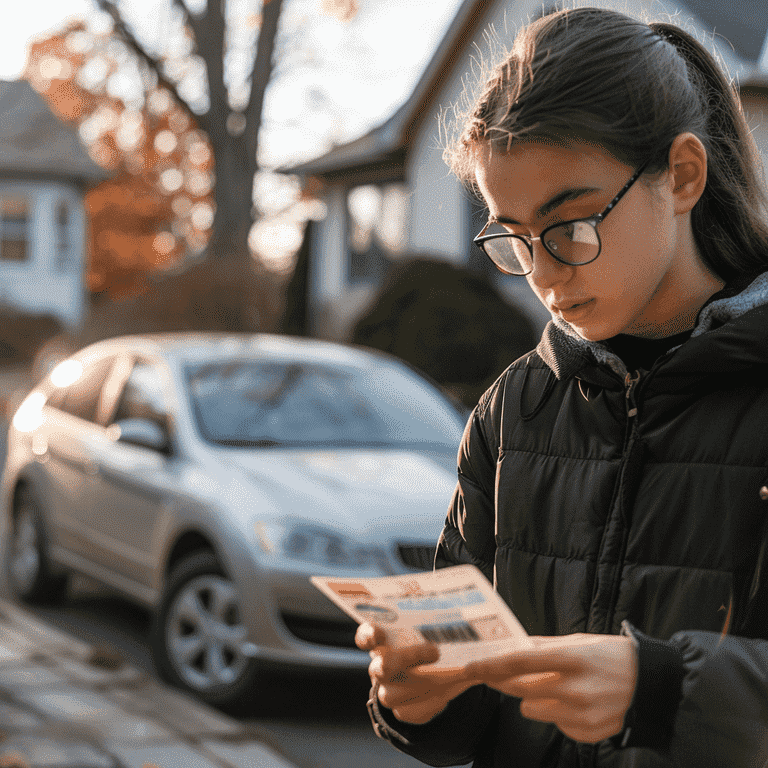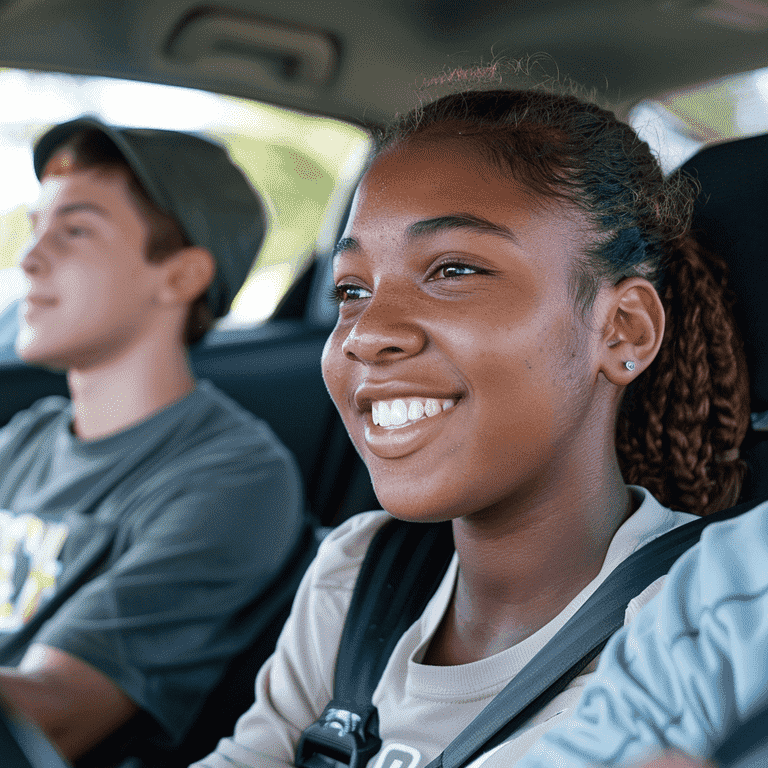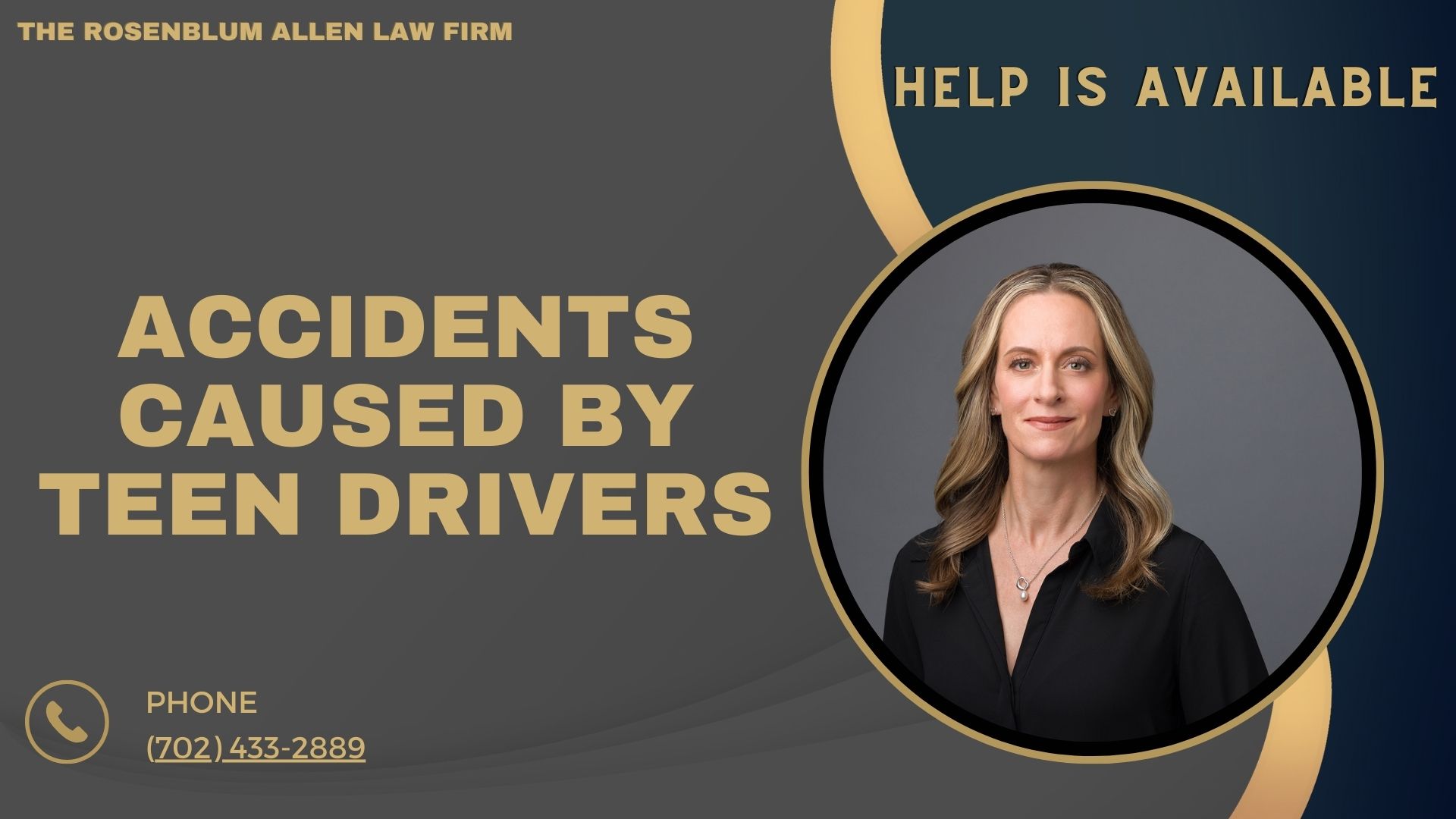Full of excitement and newfound freedom, teen drivers often face challenges on the road. Unfortunately, their lack of experience can lead to accidents. Understanding the risks and causes behind these accidents is crucial. It helps parents, educators, and teens take steps to prevent them. This article dives deep into why teen drivers are more prone to accidents and what can be done to keep everyone safer.
The Scope of Accidents Caused by Teen Drivers
Statistical Overview of Teen Driver Accidents
Teen drivers are involved in a disproportionate number of accidents compared to other age groups. The statistics paint a clear picture:
- National Statistics: According to the CDC, teens aged 16–19 are three times more likely to be involved in a fatal crash than drivers aged 20 and older.
- Comparison with Other Age Groups: Teens represent only about 8% of the driving population but are responsible for almost 15% of all car accidents.
- Trends Over Time: While there has been a slight decrease in teen driving accidents over the last decade, they remain a significant issue.
Common Types of Accidents Involving Teen Drivers
Certain types of accidents are more common among teen drivers:
- Rear-End Collisions: Teens often misjudge the distance between their car and the one in front, leading to rear-end accidents.
- Intersection Accidents: Inexperience in navigating intersections, especially left turns, makes this a common scenario for accidents.
- Single-Vehicle Crashes: Teens are likelier to lose control of their vehicle, especially on unfamiliar or winding roads, leading to crashes without involving another car.

Factors Contributing to Accidents Caused by Teen Drivers
Lack of Experience
Experience plays a massive role in driving safely. Having just gotten their licenses, teenage drivers naturally lack the years of practice older drivers have.
- Challenges in Handling Complex Driving Situations: Whether merging onto a busy highway or reacting to sudden changes on the road, teens often struggle.
- Inability to Properly Judge Distance and Speed: Estimating how fast a car is approaching or how far away it is can be challenging for an inexperienced driver.
- Limited Exposure to Diverse Driving Conditions: Many teens have yet to drive in various weather conditions, at night, or on different types of roads, making them less prepared for what they might encounter.
Risk-Taking Behaviors
Teens are known for pushing boundaries, which can translate into risky driving behaviors.
- Speeding and Aggressive Driving: The thrill of speed and a lack of understanding of the dangers involved often lead teens to drive too fast.
- Driving Under the Influence of Alcohol or Drugs: While illegal, some teens experiment with substances that impair their ability to drive safely.
- Distracted Driving: Whether texting, talking on the phone, or even adjusting the radio, distractions are a significant cause of accidents among teen drivers.
Peer Pressure and Passenger Influence
Teen drivers are more susceptible to peer pressure, which can lead to risky driving behaviors, especially when friends are in the car.
- Increased Likelihood of Risky Behavior with Peers in the Vehicle: Studies show that the presence of teen passengers increases the likelihood of an accident, as young drivers may show off or feel pressured to take risks.
- Statistics on Accidents with Multiple Teen Passengers: The risk of a fatal crash increases with each additional passenger, especially if they are all teens.
Emotional and Cognitive Development
The teenage brain is still developing, which impacts their driving decisions.
- Immaturity and Impulsivity: Teens are likelier to make snap decisions without fully considering the consequences, especially when behind the wheel.
- Impact of Stress and Emotions on Driving Decisions: Stress, anger, or excitement can cloud a teen’s judgment, leading to poor driving decisions.

Legal Repercussions for Teen Drivers
Teen drivers involved in accidents may face various legal challenges. The severity of these repercussions often depends on the nature of the accident, whether it involved injuries or fatalities, and whether any laws were broken, such as driving under the influence or reckless driving.
- Potential Criminal Charges: Depending on the circumstances, teen drivers may face charges such as reckless driving, vehicular manslaughter, or DUI. These charges can lead to fines, community service, or even jail time in severe cases.
- Impact on Driving Records and License Suspension: Accidents typically add points to a driver’s record, which can result in the suspension of the teen’s driver’s license. In some states, teens may lose their driving privileges entirely, especially if the accident involves severe infractions like speeding or driving under the influence.
Example Scenario:
If a teen driver is caught speeding and causes a crash, they might face fines and a suspended license. If alcohol is involved, the penalties could include mandatory DUI education classes and a more extended suspension period.
Financial Implications for Families
The financial burden following an accident caused by a teen driver can be substantial. It affects not just the immediate costs but also future expenses related to driving and insurance.
- Insurance Rate Increases: Insurance companies typically raise premiums significantly after an accident. Families can expect to pay much higher rates, especially if the accident involved injuries or resulted from reckless behavior.
- Costs of Legal Representation and Settlements: If the accident leads to a lawsuit, the family may need to hire a lawyer, which can be expensive. Additionally, if the teen is found liable, the family may have to pay settlements to the other parties involved in the accident.
Example Scenario:
A teen driver causes a severe accident that results in injuries. The family’s insurance rates double, and they also face a lawsuit. The legal fees and potential settlement could add up to thousands of dollars.

Long-Term Effects on Future Driving Privileges
The consequences of an accident can linger, making it difficult for the teen to drive in the future.
- Challenges in Obtaining Car Insurance: After a severe accident, especially one involving reckless driving or DUI, it may be difficult or prohibitively expensive for the teen to obtain car insurance. Some insurers might refuse coverage, or the family may have to seek out high-risk insurance providers.
- Difficulty Securing a Driver’s License After Severe Accidents: If the teen’s license is revoked or suspended due to the accident, they may face additional hurdles when trying to reinstate it. This could include mandatory driving courses, longer probationary periods, and other restrictions.
Example Scenario:
A teen involved in a severe accident loses their license. When they’re eligible to drive again, they struggle to find affordable insurance, and their new license comes with strict conditions.
Parental Involvement and Education
Parents play a crucial role in shaping their teen’s driving habits. Active involvement and setting clear expectations can significantly influence a teen’s approach to driving.
- Setting Rules and Expectations for Teen Drivers: Parents should establish clear rules regarding curfews, the number of passengers allowed, and the use of mobile phones while driving. For example, a family might enforce a “no phone while driving” rule to reduce distractions.
- Regular Discussions About Safe Driving Practices: Engaging in open conversations about the dangers of speeding, the importance of seatbelts, and the consequences of impaired driving helps reinforce safe driving behavior. Parents can share news stories or personal experiences to illustrate these points.
- Monitoring Driving Habits and Providing Feedback: Tools like driving apps or in-car monitoring systems can help parents track their teen’s driving habits. This allows them to provide constructive feedback, such as discussing instances of hard braking or speeding.

Graduated Driver Licensing (GDL) Programs
Graduated Driver Licensing (GDL) programs are designed to gradually introduce teen drivers to the road, allowing them to gain experience in a controlled manner.
- Explanation of GDL Stages and Requirements: Most GDL programs include stages such as a learner’s permit, an intermediate or provisional license, and finally, a full license. Each stage has specific restrictions, such as supervised driving or limits on night driving.
- Effectiveness of GDL Programs in Reducing Teen Accidents: Research has shown that GDL programs are highly effective in reducing accidents among teen drivers. Limiting high-risk driving situations and gradually increasing driving privileges gives teens more time to develop their driving skills safely.
Example Scenario:
A teen with a learner’s permit drives only with a parent in the car. Over time, as they move to the next GDL stage, they gain more independence, such as driving during the day without supervision but still adhering to restrictions on night driving and passenger limits.
Technology-Based Solutions
Advancements in technology offer new ways to monitor and promote safer driving habits among teens.
- Use of Apps to Monitor Driving Behavior: Several apps track driving habits like speed, braking, and phone use. Parents can receive real-time updates and reports, helping them stay informed about their teen’s driving behavior.
- In-Car Safety Features Designed to Assist Teen Drivers: Modern vehicles often have features like lane departure warnings, automatic braking, and speed limiters. These features provide an extra layer of safety, especially for inexperienced drivers.
- Role of Telematics in Promoting Safer Driving Habits: Telematics systems, often supplied by insurance companies, monitor driving behavior and offer discounts for safe driving. This can incentivize teens to follow safe driving practices, as it directly affects their insurance costs.
Example Scenario:
A teen’s car has a telematics device that tracks their speed and braking habits. The teen drives cautiously to qualify for an insurance discount, leading to safer driving overall.

Driver Education and Training Programs
Proper education and training are vital for preparing teens for driving.
- Importance of Comprehensive Driver Education: A thorough driver education program covers the basics of operating a vehicle and defensive driving techniques, road safety laws, and the effects of alcohol and drugs on driving.
- Availability of Defensive Driving Courses: Defensive driving courses teach teens how to anticipate and react to potential hazards on the road. These courses often include practical exercises that simulate real-world driving scenarios.
- Encouraging Participation in Advanced Driving Skill Workshops: Advanced workshops, such as skid control or emergency braking courses, provide teens with hands-on experience handling challenging driving conditions. These programs are particularly beneficial for building confidence and competence behind the wheel.
Example Scenario:
A teen completes a defensive driving course that includes simulated rainy conditions. When faced with wet roads, they are better prepared to handle the situation safely.
Analysis of High-Profile Accidents Involving Teen Drivers
Some accidents involving teen drivers gain significant attention due to their severity or the circumstances surrounding them. These high-profile cases often lead to changes in laws or driving policies, serving as wake-up calls for teens and adults.
Example Case: The Ethan Couch Case (2013)
- Details of the Incident: Ethan Couch, a 16-year-old from Texas, was driving under the influence of alcohol and speeding when he lost control of his vehicle, crashing into a group of pedestrians and killing four people. The case gained national attention when Couch’s defense claimed he suffered from “affluenza,” a condition where his privileged upbringing supposedly led to a lack of understanding of consequences.
- Contributing Factors:
- Driving under the influence
- Excessive speeding
- Lack of seatbelt use by passengers
- Overconfidence in driving abilities
- Lessons Learned: This case highlighted the dangers of teen drivers underestimating the risks of impaired driving. It also sparked debates about the accountability of young drivers and the influence of wealth on legal outcomes.
- Changes in Laws or Policies: In the aftermath, there was a stronger push for stricter penalties for DUI offenses involving teens. Texas also faced public pressure to reassess how it handles juvenile offenders in severe cases.
Example Case: The Deadly Turn in a School Zone (2016)
- Details of the Incident: A 17-year-old driver, distracted by texting, accidentally veered into a school zone during pickup time, striking and killing a young child. The tragedy devastated the local community and raised awareness about the dangers of distracted driving.
- Contributing Factors:
- Distracted driving due to texting
- Lack of attention in a high-risk area (school zone)
- Inexperience in handling unexpected situations
- Lessons Learned: This incident is a stark reminder of how a momentary lapse in attention can have life-altering consequences. The case also underscored the need for more vigorous enforcement of laws against texting and driving, especially for teens.
- Changes in Laws or Policies: Following the accident, several states, including the one where this tragedy occurred, implemented stricter laws on cellphone use while driving, with harsher penalties for violations in school zones.

Testimonials from Affected Families
Hearing from families who have experienced the devastating effects of teen driving accidents brings a personal perspective to the issue. These stories emphasize the emotional and psychological toll such accidents can take.
Personal Story: A Family’s Loss and Advocacy
- The Accident: In 2015, the Johnson family lost their 16-year-old daughter in a car crash. She was a passenger in a car driven by a friend who was speeding and lost control on a wet road. Both teens died instantly.
- Impact on the Family: The Johnsons were devastated by the loss of their daughter. Over time, they channeled their grief into advocacy, creating a foundation to promote safe driving among teens.
- Advocacy and Community Involvement: The family now speaks at schools and community events, sharing their story to raise awareness about the dangers of reckless driving. They’ve also worked with local lawmakers to push for stricter teen driving laws.
Personal Story: Overcoming Guilt and Moving Forward
- The Accident: Jake, a teen driver, caused a severe accident that resulted in the death of his best friend. Jake ran a red light, distracted by his phone, leading to a collision.
- Emotional Toll: Jake struggled with overwhelming guilt and depression after the accident. He withdrew from friends and family, and it took months of therapy for him to begin processing what happened.
- Path to Healing: With the support of his family and community, Jake eventually found a way to cope with his guilt. He now volunteers with a local organization that educates teens about the dangers of distracted driving, hoping to prevent others from making the same mistake.
Psychological and Emotional Impact on Teen Drivers After an Accident
The psychological effects of a car accident can be profound, especially for teen drivers. Guilt, trauma, and fear can linger long after the physical injuries have healed. Understanding these impacts is crucial in helping teens recover and move forward.
Coping with Guilt and Trauma
Guilt and trauma are common emotions experienced by teen drivers after an accident, mainly if the crash resulted in injury or death.
- Common Psychological Effects: Many teens experience post-traumatic stress disorder (PTSD), anxiety, and depression after an accident. Nightmares, flashbacks, and a constant sense of fear can disrupt their daily lives.
- Importance of Counseling and Mental Health Support: Professional counseling is often necessary to help teens work through these emotions. Therapy can provide a safe space to express feelings of guilt and trauma, helping them develop healthy coping mechanisms.
Rehabilitation and Reintegration
After an accident, teen drivers may need support to regain their confidence and reintegrate into their daily lives, including driving again.
- Programs That Help Teen Drivers Regain Confidence: Several programs focus on helping teens rebuild their driving confidence after an accident. These might include defensive driving courses or one-on-one sessions with a driving instructor specializing in post-accident recovery.
- Role of Community Service or Educational Programs in Rehabilitation: Some teens find that participating in community service, especially in areas related to road safety, helps them heal. Educational programs can also provide a sense of purpose and help them channel their experiences into something positive.
Example Scenario:
A teen who caused an accident that injured another driver attends a rehabilitation program. Through therapy and defensive driving courses, they slowly regain the confidence to drive again. They also start volunteering at a local hospital, speaking to other teens about the importance of safe driving.

Breaking It All Down
Accidents caused by teen drivers are a significant concern that affects not just the individuals involved but entire families and communities. These accidents often stem from a combination of inexperience, risk-taking behaviors, and the natural impulsivity of youth. The consequences can be severe, leading to legal troubles, financial strain, and deep emotional scars.
However, we can reduce the likelihood of these tragic events through education, parental involvement, and the implementation of preventative measures like Graduated Driver Licensing (GDL) programs and technology-based solutions. Real-life examples and personal stories remind us of the human cost of these accidents and the importance of continued efforts to promote safe driving habits among teens.
Ultimately, it takes a collective effort—parents, educators, policymakers, and teens themselves—to make our roads safer. By staying informed, setting clear expectations, and providing the necessary support, we can help teens navigate the challenges of driving and prevent accidents that have life-altering consequences. Let’s commit to working together to protect our young drivers and everyone who shares the road with them.

Frequently Asked Questions
How can parents help their teens become safer drivers?
Parents can play a crucial role by setting clear driving rules, having regular discussions about safe driving practices, and using technology to monitor their teen’s driving habits. Participating in their teen’s driving education and reinforcing lessons learned in driver’s ed are also effective ways to ensure safe driving behaviors.
What are the most common mistakes teen drivers make that lead to accidents?
Some of the most common mistakes include speeding, distracted driving (such as texting or using a phone), misjudging distances and speeds, and failing to adjust to road conditions. Teens are also prone to taking risks, especially when influenced by peer pressure.
Are there specific driving conditions that are more dangerous for teens?
Yes, driving at night, in bad weather, or on unfamiliar roads can be particularly challenging for teen drivers. These conditions require more advanced driving skills and judgment, which many teens have not yet fully developed.
What role do schools play in promoting safe driving among teens?
Schools can promote safe driving by incorporating driver safety education into their curriculum, organizing peer-led safety programs, and hosting events or workshops that highlight the dangers of risky driving behaviors. Partnerships with local law enforcement for safety demonstrations can also be beneficial.
Can certain vehicles help reduce the risk of accidents for teen drivers?
Yes, vehicles equipped with modern safety features, such as lane departure warnings, automatic emergency braking, and electronic stability control, can help reduce the risk of accidents. It’s also advisable for teens to drive vehicles that are not too powerful or sporty, as these can encourage speeding and risky driving behaviors.
What should a teen driver do immediately after being involved in an accident?
After an accident, the teen should first ensure their safety and the safety of others by moving to a safe location if possible. They should call emergency services, exchange information with the other driver(s), and document the scene by taking photos. It’s also important for the teen to contact their parents and report the accident to their insurance company.
Are there any insurance options specifically designed for teen drivers?
Some insurance companies offer programs specifically for teen drivers that include features like telematics to monitor driving behavior or discounts for completing safe driving courses. These programs are designed to promote safe driving while helping families manage the higher insurance costs associated with teen drivers.
What are the long-term effects of having a serious accident as a teen driver?
Serious accidents can lead to long-term consequences such as difficulties in obtaining affordable car insurance, having a permanent record of the incident, and dealing with ongoing psychological effects like PTSD or anxiety. These consequences can impact a teen’s ability to drive and their overall well-being for years to come.
How can technology help prevent accidents caused by teen drivers?
Technology can help by providing tools that monitor driving behavior, such as apps that track speed and phone usage. In-car safety features like automatic braking, lane-keeping assist, and blind-spot monitoring can also prevent accidents by assisting teens in making safer driving decisions.
What should parents do if their teen is struggling with anxiety or fear after an accident?
If a teen is struggling emotionally after an accident, it’s important for parents to seek professional counseling or therapy. Support from family, friends, and mental health professionals can help the teen work through their emotions and regain their confidence.
How can teens be encouraged to resist peer pressure while driving?
Encouraging teens to establish and practice a set of personal rules for driving can help them resist peer pressure. Educating them about the risks and consequences of risky driving, and providing them with strategies for saying no in difficult situations, can also empower them to make safer choices.
What is the most effective way for a teen to gain driving experience?
The most effective way for a teen to gain driving experience is through a combination of supervised practice, driving in a variety of conditions (like night driving, highway driving, and bad weather), and participating in defensive driving courses. This comprehensive approach helps teens develop the skills and judgment necessary for safe driving.
Why is it important for teens to have regular check-ins about their driving habits?
Regular check-ins allow parents to stay informed about their teen’s driving experiences and address any issues before they become serious. It also provides an opportunity to reinforce safe driving habits and adjust any rules or guidelines as the teen gains more experience.
What resources are available for parents who want to improve their teen's driving safety?
Many resources are available, including online driving safety courses, mobile apps that monitor driving behavior, local defensive driving schools, and community programs focused on teen driver safety. Insurance companies often provide tools and discounts for safe driving programs as well.

Additional Resources for You from The Rosenblum Allen Law Firm.
Molly Rosenblum Allen, Esq., has created a range of resources to assist you during challenging times. Whether you’ve been involved in an accident or are dealing with a personal injury, these resources offer guidance and support:
Las Vegas Personal Injury Attorney: If you’ve been injured due to someone else’s negligence, this resource helps you understand your rights and how to pursue compensation for your injuries.
Las Vegas Car Accident Attorney: Car accidents can be overwhelming. This guide walks you through the steps to take after an accident and how to secure the compensation you deserve.
Motorcycle Accident Lawyer Las Vegas: Motorcycle accidents often result in serious injuries. This resource provides crucial information on your legal options and how to protect your rights.
Wrongful Death Lawyer Las Vegas: Losing a loved one is devastating. This guide explains how to seek justice and compensation for wrongful death due to another’s negligence.
Truck Accident Attorney Las Vegas: Truck accidents are complex and often involve severe injuries. This resource details the steps you need to take to pursue a claim and hold the responsible parties accountable.
Las Vegas Drunk Driving Accident Attorney: Drunk driving accidents can have life-altering consequences. Learn how to take legal action against those responsible and recover damages.
Las Vegas Slip and Fall Attorney: Slip and fall accidents can happen anywhere. This guide covers your rights as a victim and how to file a claim to recover your losses.

Offsite Resources for You
AAA Foundation for Traffic Safety: This organization is dedicated to improving road safety and offers research, tips, and tools to help prevent accidents, particularly among teen drivers.
National Safety Council: The National Safety Council provides a wealth of information on road safety, including resources specifically aimed at reducing teen driving accidents.
Mothers Against Drunk Driving (MADD): MADD is a non-profit organization focused on ending drunk driving, supporting victims, and preventing underage drinking. They offer resources and advocacy for those affected by drunk driving accidents.
Teen Driver Source by CHOP: Managed by the Children’s Hospital of Philadelphia, this site offers comprehensive resources for parents and teens to help reduce the risks associated with teen driving.
Insurance Institute for Highway Safety (IIHS): IIHS conducts research and provides safety ratings for vehicles, as well as information on how to reduce accidents and injuries, particularly among teen drivers.
Safe Kids Worldwide: This organization focuses on preventing injuries in children and teens, offering resources on road safety, including tips for teen drivers and their parents.

A Special Message from Our Lead Attorney, Molly Rosenblum Allen, Esq

Dear Reader,
Thank you for taking the time to read through these resources. I hope you found the information helpful and insightful. If you have any questions or need assistance with your pet custody or divorce case, please don’t hesitate to reach out. My team and I are here to support you.
Call us at (702) 433-2889 to get the ball rolling on your situation. We look forward to helping you through this challenging time.
Best regards,
Molly Rosenblum Allen, Esq.






